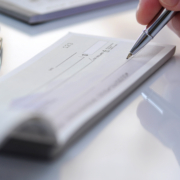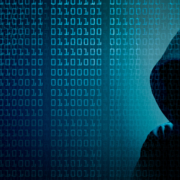The rapid growth of synthetic identity fraud
By Hannah Flanders
Like many aspects of our day-to-day lives, the expansion of technology has both enhanced and complicated the ways in which we operate. As more and more of our information lives online, identity theft — once more likely to occur because of a stolen wallet — has also assumed a digital appearance: synthetic identity theft.
What is Synthetic Identity Fraud?
Synthetic identity fraud is defined as the use of a combination of pieces of personally identifiable information (PII) to fabricate a person or entity in order to commit a dishonest act for personal or financial gain.
This form of identity theft has allowed bad actors to combine a stolen Social Security Number (SSN) and other false information — such as a fake name, address, date of birth, or phone number — to create a counterfeit identity to steal funds, escape prosecution, or any other number of criminal and fraudulent activities.
An Alarming Trend
In 2020, the Federal Bureau of Investigation (FBI) named synthetic identity theft as the fastest growing financial crime in the United States. Fraud targets are often those who do not typically use credit or are less likely to monitor their credit activity — including children, homeless individuals, and the elderly. These victims may find themselves blindsided as fraudsters create a new identity, apply for credit, and after years of building good credit by making payments for a time, abandon the account without paying anything back to the financial institution.
While this type of fraud is already difficult to detect due to its elusive or “normal” nature, many bad actors go to incredible lengths to appear as such, states Forbes. In addition to establishing good credit by making payments quickly and on time, some create digital profiles or use P.O. boxes for addresses.
Not only has technology and access to the dark web made PII more accessible to fraudsters, in 2011 the Social Security Administration (SSA) began randomizing the nine-digit social security codes rather than assigning them to individuals based on their geographical location and group number. No longer do social security numbers raise red flags when enrolling or opening accounts “out of state.”
As online banking grows in popularity, so too do concerns for synthetic identity theft. Between prevalent phishing schemes and heightened risks for data breaches — accessing PII and conducting synthetic identity fraud has become much easier than in years prior.
How to be Proactive Against Bad Actors
Inconsistent categorization and reporting make it difficult to identify and mitigate this type of fraud — as far as banks and credit bureaus can tell, these individuals are just like anyone else. . . until they “bust out” or abandon the maxed-out account with no intention of repayment.
After abandoning the false identity’s account, a fragmented file is created. This additional file not only becomes associated with the original SSN but also holds the additional credit report information and other fabricated PII. Unfortunately, this information could negatively impact the credit rating of the real individual.
When working with customers, bankers should advise frequent credit report checks or freezing unused credit at credit bureaus throughout the U.S. as to deter criminals or catch them early.
In addition, customers may take additional steps to protect themselves and their family against synthetic identity theft. One way parents can protect their children from fraudsters is by requesting their child be added to their credit profile. By adding a child to an adult’s credit profile, not only does the child’s own credit profile become established in his or her name and SSN, but the child is also able to begin building their credit.
The Cost of Synthetic Fraud
While victims of identity theft typically are not liable for fraudulent purchases or accounts, as long as they can prove they are the real SSN holder and not the thief, banks and other financial institutions are left to absorb the cost. This scheme is not only incredibly costly to banks across the country — with losses estimated at $20 billion in 2020, according to the Federal Reserve Bank of Boston — but gaps in the U.S. Fair Credit Reporting Act may have also increased the likelihood of repeat offenders.
The Federal Reserve has reported that bad actors are able to ‘flood the financial institution with an overwhelming number of claims’ on their fake accounts, and when creditors are unable to fulfill the investigation in the allotted timeframes, the disputed item is removed from the false credit report and time and time again, fraudsters get away with the act.
“Synthetic IDs are a struggle for community banks to identify,” states Lenore Breit, vice president – compliance manager at Wausau’s Prevail Bank. “Based on a recent presentation, [community banks] most likely have synthetic ID fraud in their deposit and loan accounts that remains undetected with traditional third-party ID verification programs that most community banks use.”
“There are other, more robust ID verification programs available to detect synthetic ID fraud,” adds Breit. “But they are costly and may not interface with legacy software.”
One such software program, the electronic Consent Based SSN Verification service, was created in part by the Economic Growth, Regulatory Relief, and Consumer Protection Act. The electronic service offered by the SSA was created in 2018 to aid financial institutions in combating synthetic identity fraud and verify an authorizing individual’s name, date of birth, and SSN against the SSA records. Services are based on the annual transaction volume and can cost thousands or even millions of dollars.
Common Signs of Synthetic Identification Theft
While difficult to trace, there are a few significant ways bankers can remain attentive to PII and other key indicators of synthetic identity fraud.
Most obvious is ensuring all SSNs match to the PII given. Do not assume a name change or relocation; ask questions or require verification for the sake of your bank and the security and privacy of all customers. This extra step could make all the difference in protecting the personal information of every customer.
If an account is already open, bankers should note applicants who have the same contact information or SSN as well as those with multiple authorized users.
As synthetic identity fraud becomes increasingly prevalent throughout the U.S., it is critical, for the safety of customers and security of all financial institutions, that Wisconsin bankers are prepared to combat this emerging fraudulent activity, caution community members against sharing unnecessary personal information with others, and assist individuals in regaining their rightful identity if necessary.
If you are interested in learning more about synthetic identity fraud, how these schemes can impact your bank or customers, or more ways you can take a stand against bad actors, please contact WBA’s Legal Team at wbalegal@wisbank.com or 608-441-1200.
 By Dave Oldenburg
By Dave Oldenburg

 By Rose Oswald Poels
By Rose Oswald Poels


